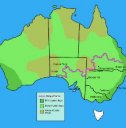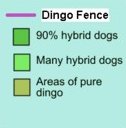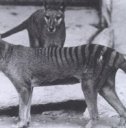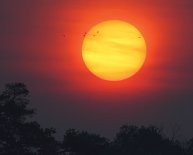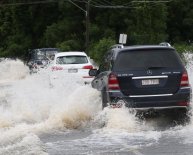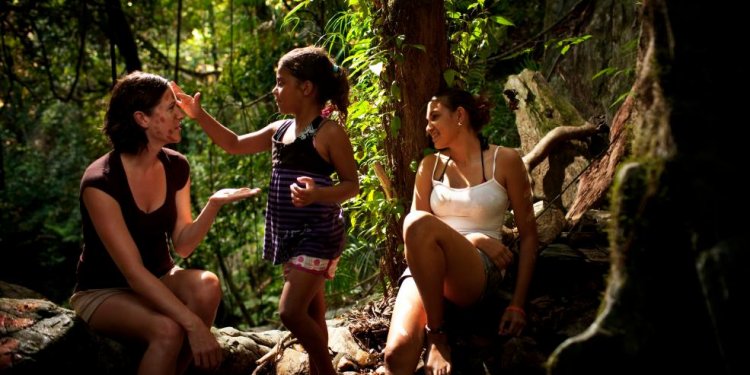
Facts about Australian culture
 In this section we'll cover some of the more unusual and interesting facts about Australia.
In this section we'll cover some of the more unusual and interesting facts about Australia.
The name Australia comes from the Latin Australis which means "of the South" Legends of "Terra Australis Incognita" an "unknown land of the south" date back to Roman times.
When you've finished checking out the interesting facts about Australia and you want to have a look at the more light-hearted side of the land downunder you can check out our page.
One of the interesting facts about Australia is that Australia is the biggest island and the smallest continent in the world.
Australia is the driest inhabited continent on earth, the driest is Antarctica
With an average of 330 metres Australia is the lowest continent in the world.
The Australian Snowy Mountains receive more snowfall in a year than the Swiss Alps.
Australia is the only continent without an active volcano; now there's one of the interesting facts about Australia that we're all pretty happy about!
The only land locked state or territory in Australia is the Australian Capital Territory.
It is thought that Aboriginals have called Australia home for between 40, 000 and 80, 000 years.
It is estimated that at the time of British settlement there was about 300, 000 Aboriginal people who spoke around 250 languages.
British settlers aboard the 11 ships of the First Fleet arrived in Botany Bay in 1788 but moved north to Port Jackson (Sydney Cove) a few days later when they found the Botany Bay site unsuitable. They arrived at Port Jackson on the 26th January 1788 (now Australia Day).
 The number of transported to Australia was about 162, 000; they were transported in 806 ships.
The number of transported to Australia was about 162, 000; they were transported in 806 ships.
About 98-99% of the convicts sent here were from England, Wales, Ireland and Scotland but some were sent from other British colonies like Canada and India, while others came from New Zealand, Hong Kong the Caribbean and other countries.
A lot of soldiers were also transported here for crimes like mutiny and desertion.
The Transportation of British convicts to Australia ended in 1868.
Australian are generally law abiding people but one of our greatest legends is Ned Kelly, a bushranger, law breaker, killer and leader of the notorious Kelly gang of the late 1800's; you can read more about Ned and his gang on our page.
Unusual and interesting facts about Australia include Australia's only armed rebellion, the "Eureka Stockade" took place in the Ballarat Goldfields in 1854. The goldfield workers (known as 'diggers') were opposed to the government miners' licences. The rebellion became a significant event in the reforming of unfair laws, the developing of democracy in Australia, and the formation of the Australian identity and a fundamental principle of Aussie 'mateship'. The Anzac soldiers of World War 1 went on to adopt the term 'diggers' and our soldiers have been known as 'diggers' since.
Burke and Wills were the first white explorers to cross Australia from South to North. They left Melbourne in August 1860 and reached the Gulf of Carpentaria in Queensland in February 1861. They both perished near Cooper's Creek on the return journey.
Another of the interesting facts about Australia is these days there are about 115 people in gaol (jail) in Australia per 100, 000 of population. In the USA it is about 715, Russia is about 585, New Zealand is about 160, Japan is about 54 and Canada is about the same as Australia at 116.
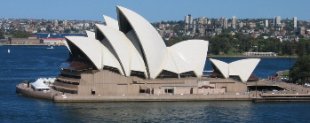 Women were given the right to vote in Australia in 1902.
Women were given the right to vote in Australia in 1902.
The first female Member of Parliament in Australia was Edith Cowan who was elected to the Western Australia Legislative Assembly in 1921.
Neville Bonner became Australia's first Aboriginal senator in 1971.
The Sydney Harbour Bridge was opened in 1932 and is the widest steel arch bridge in the world.
The design for the Sydney Opera House was chosen after the New South Wales Government conducted a competition in the late 1950's. Danish Architect Jorn Utzon's vision was the winning design. Unfortuanetely in 1966 Jorn Utzon resigned from the project because of disagreements with the Government. The building was completed in 1973 and Queen Elizabeth II officially opened it in that year. Jorn Utzon died in 2008 without ever returning to Sydney to see in person the amazing Opera House he designed.
One of the unusual and interesting facts about Australia is about the Australian Prime Minister Harold Holt. Prime Minister Harold Holt disappeared while going for a swim at Cheviot Beach Victoria on the 17th December 1967. His disappearance has remained a mystery all these years.
Gough Whitlam is the only Australian Prime Minister to be dismissed from office. He was dismissed as Prime Minister by the then Governor General, Sir John Kerr in 1975.
The Honey Suckle Creek Tracking Station near Canberra broadcast the pictures of man's first steps on the moon to the rest of the world in 1969.
United States architect Walter Burley Griffin won the competition in 1912 to design Australia's capital city of Canberra.
Interesting facts about Australia include the longest straight stretches of road, railway track and the longest fence in the world.
The longest section of straight railway track in the world at 478 kilometres crosses The Nullarbor Plain ( to ).
The longest straight section of road at 146 kilometres is also on the Nullarbor Plains.
The longest fence in the world is known as The Dingo Fence, Wild Dog Fence or Border Fence depending on which state you are in.
Map from Wikipedia underThe fence is approximately 5, 400 kilometres long starting at Jimbour in Queensland and continuing on to the Great Australian Bight in South Australia.
My father was a Boundary Rider on the / section of the fence at Camerons Corner when I was a kid.
The largest cattle station in the world is Anna Creek Station in South Australia at over 34, 000 square kilometres. It is 8 times bigger than the biggest ranch in Texas, USA and bigger than the country of Belgium.
The population density in Australia is generally calculated in square kilometres per person, not people per square kilometre as it is in other countries.
Australia changed to the metric system of measurement from 1970 onwards. Before the changeover to the metric system Australia used imperial units of measurement that were inherited from the British. The imperial system was phased out over the years following 1970 up until about 1988.
In converting kilometres to miles the conversion goes approximately like this; 1 kilometre = 0.62 of a mile, 10 kilometres = 6.21 miles, 25 kilometres = 15.53, 50 kilometres = 31.07 miles, 100 kilometres = 62.14 miles and so on.
Another one of the interesting facts about Australia is Australia has one of the lowest population densities in the world with an average of three people per square kilometre. The world average on land only is about 45 per square kilometre.
